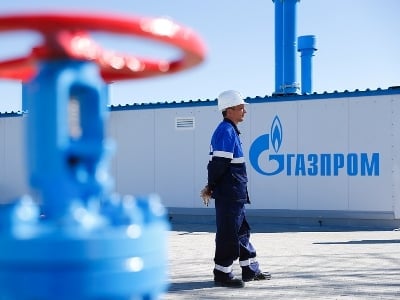The European market is fairly balanced, with prices and renewable energy generation fairly stable.
The only downside is the low level of gas injection into underground storage facilities, but the season for this has only just begun.
UKRAINIAN TRANSIT
Gas Transport System Operator of Ukraine, or GTSOU, has accepted a booking from Gazprom today to transport 40.7 million cubic meters of gas through the country, compared with 40 mcm on Monday and just below that at the weekend, data from GTSOU show.
Capacity was requested only through one of two entry points into Ukraine’s Gas Transport System, the Sudzha metering station. A request was not accepted through the Sokhranovka metering station.
“Gazprom is supplying Russian gas for transit through the territory of Ukraine at the volume confirmed by the Ukraine side via the Sudzha metering station at 40.1 mcm on April 25, with booking via the Sokhranovka metering station declined,” Gazprom spokesman Sergei Kupriyanov told reporters.
GTSOU has declared a force majeure with respect to acceptance of gas for transit through Sokhranovka, claiming that it cannot control the Novopskov compressor station. The route through Sokhranovka had provided transit of more than 30 mcm of gas per day. Gazprom believes that there are no grounds for the force majeure or obstacles to continuing operations as before.
EUROPEAN MARKET
Wind turbines generated 16% of Europe’s electricity last week and 17.3% on Monday, according to WindEurope.
The spot price for gas in Europe fell 1%, the day-ahead contract at the Dutch TTF gas hub in the Netherlands closing at $456 per thousand cubic meters.
The spread between LNG prices in Asia and those in Europe is noticeable. In Asia, the most expensive futures contract for June on the JKM Platts index is $424 per thousand cubic meters, and futures under the LNG North-West Europe Marker are $407 per thousand cubic meters.
EUROPEAN INVENTORIES
Current inventory levels in Europe’s underground gas storage facilities are 57.94%, which is 20 percentage points above the average for the same date over the past five years, according to Gas Infrastructure Europe.
Inventories rose 0.28 percentage points during the April 23 gas day. April injection rates have been noticeably less than the five-year average.
Gazprom warns that “replenishing gas reserves in storage facilities could be a non-trivial task for European companies. This will be very difficult to do, given the politically motivated decisions aimed at refusing to import Russian pipeline gas. Competition for LNG will have a big effect on the volumes of gas available on the European market.”
European LNG terminals operated at 58% capacity in March due to strikes at terminals in France, but 65% since the start of April as most of the terminals operated by Elengy went back to work.
U.S. INVENTORIES
The state of gas in UGS facilities in the United States is of increasing importance for the global market, as the country is actively increasing gas exports. Freeport LNG, the largest U.S. LNG plant, has announced reopening all three liquefaction lines, thereby reducing the gas surplus on the U.S. market and boosting supply of LNG to the global market.
The U.S. has begun its gas-injection season into UGS facilities, about a week later than usual.
Inventories decreased 2.1 billion cubic meters for the latest reporting week, roughly twice as much as for this time of year.
The current level of inventories is around 40%, which is 21 percentage points above the five-year average, according to the U.S. Energy Department’s Energy Information Administration.

 Iran Energy News Oil, Gas, Petrochemical and Energy Field Specialized Channel
Iran Energy News Oil, Gas, Petrochemical and Energy Field Specialized Channel



